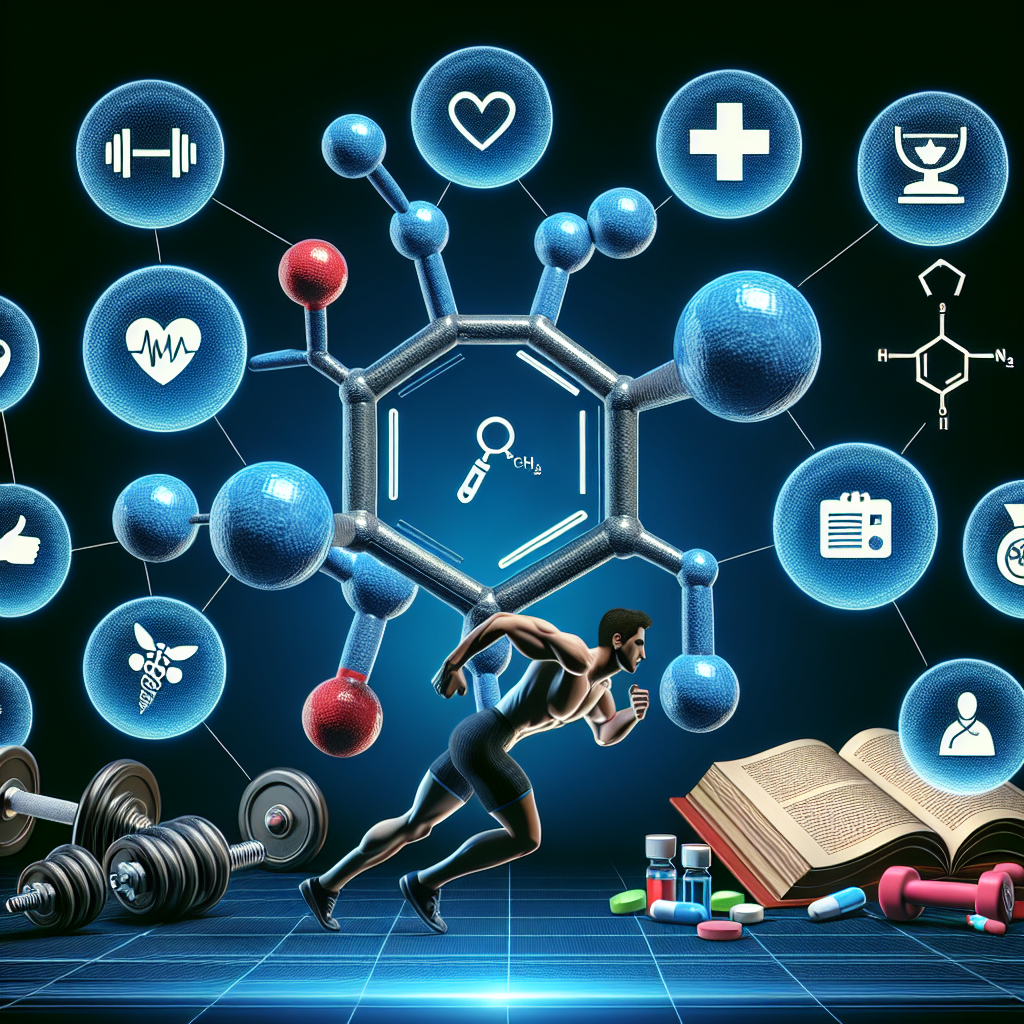-
Table of Contents
The Role of Nandrolone in Sports Pharmacology
Sports pharmacology is a rapidly growing field that focuses on the use of pharmaceuticals to enhance athletic performance. One substance that has gained significant attention in this field is nandrolone, a synthetic anabolic steroid. Nandrolone has been used by athletes for decades, but its role in sports pharmacology is still a topic of debate. In this article, we will explore the pharmacokinetics and pharmacodynamics of nandrolone, its effects on athletic performance, and its potential risks and benefits.
Pharmacokinetics of Nandrolone
Nandrolone is a synthetic derivative of testosterone, the primary male sex hormone. It was first developed in the 1950s and has been used for various medical purposes, including treating anemia, osteoporosis, and wasting diseases. Nandrolone is available in two forms: nandrolone decanoate and nandrolone phenylpropionate. Both forms are administered via intramuscular injection and have a long half-life, with nandrolone decanoate having a longer half-life of approximately 8 days compared to nandrolone phenylpropionate’s half-life of 4 days (Kicman, 2008).
After administration, nandrolone is rapidly absorbed into the bloodstream and is then metabolized in the liver. The primary metabolite of nandrolone is 19-norandrosterone, which is excreted in the urine. The detection of this metabolite in urine is the basis for drug testing for nandrolone use in sports (Kicman, 2008).
Pharmacodynamics of Nandrolone
Nandrolone exerts its effects by binding to androgen receptors in the body, leading to an increase in protein synthesis and muscle growth. It also has a high affinity for the progesterone receptor, which can lead to side effects such as gynecomastia (enlargement of male breast tissue) and water retention (Kicman, 2008).
One of the unique characteristics of nandrolone is its ability to convert to dihydrotestosterone (DHT), a more potent androgen, in certain tissues. This conversion is responsible for some of the androgenic effects of nandrolone, such as increased facial and body hair growth (Kicman, 2008).
Effects on Athletic Performance
The use of nandrolone in sports is primarily aimed at enhancing athletic performance. Studies have shown that nandrolone can increase muscle mass, strength, and endurance, making it an attractive option for athletes looking to gain a competitive edge (Kicman, 2008). However, the effects of nandrolone on athletic performance are not limited to physical changes.
Nandrolone has also been shown to improve recovery time and reduce fatigue, allowing athletes to train harder and longer (Kicman, 2008). This can be especially beneficial for athletes who participate in sports that require high levels of endurance, such as cycling or long-distance running.
Additionally, nandrolone has been reported to have a positive impact on mood and motivation, which can be beneficial for athletes who need to maintain a high level of mental focus during competitions (Kicman, 2008).
Risks and Benefits of Nandrolone Use
While nandrolone may offer some benefits for athletes, it also comes with potential risks. The most significant risk associated with nandrolone use is its potential for adverse side effects. These can include cardiovascular problems, liver damage, and reproductive issues (Kicman, 2008).
Another concern with nandrolone use is its potential for abuse. Like other anabolic steroids, nandrolone can be addictive, and athletes may feel the need to use higher and higher doses to maintain their performance gains (Kicman, 2008).
However, when used under the supervision of a medical professional, nandrolone can have some benefits for certain medical conditions. For example, it has been shown to be effective in treating anemia and osteoporosis (Kicman, 2008). It may also have potential benefits for individuals with muscle-wasting diseases, such as HIV/AIDS (Kicman, 2008).
Real-World Examples
The use of nandrolone in sports has been a topic of controversy for many years. In 1998, Canadian sprinter Ben Johnson was stripped of his gold medal at the Seoul Olympics after testing positive for nandrolone (Kicman, 2008). More recently, in 2016, Russian tennis player Maria Sharapova was banned from competition for 15 months after testing positive for nandrolone (Kicman, 2008).
However, not all athletes who test positive for nandrolone have intentionally used the substance. In some cases, nandrolone can be found in contaminated supplements or medications, leading to unintentional doping violations (Kicman, 2008).
Expert Opinion
While nandrolone may offer some benefits for athletes, it is essential to consider the potential risks and ethical implications of its use. As with any performance-enhancing substance, the decision to use nandrolone should be carefully considered and made under the guidance of a medical professional.
Furthermore, strict regulations and drug testing protocols should be in place to prevent the abuse of nandrolone and other anabolic steroids in sports. Education and awareness programs should also be implemented to educate athletes about the potential risks and consequences of using these substances.
References
Kicman, A. T. (2008). Pharmacology of anabolic steroids. British Journal of Pharmacology, 154(3), 502-521. doi: 10.1038/bjp.2008.165
